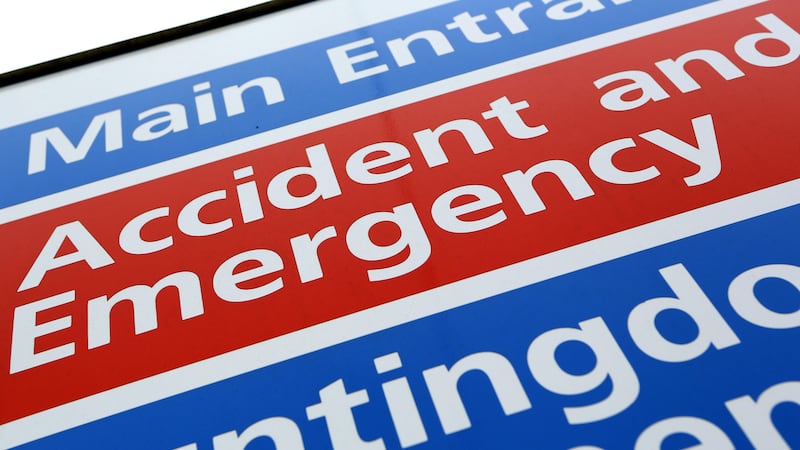The overall size of the waiting list has fallen again and a target for cancer referrals has been passed for the first time, though a key target for patients waiting in A&E departments has been missed.
Here are the main figures from the latest NHS performance data for England:
– Overall waiting list
The waiting list for routine hospital treatment has dropped for the fifth month in a row.
An estimated 7.54 million treatments were waiting to be carried out at the end of February, relating to 6.29 million patients, down slightly from 7.58 million treatments and 6.32 million patients at the end of January.
The list hit a record high in September 2023 with 7.77 million treatments and 6.50 million patients.
It has been on an upwards path for much of the last 10 years, passing three million in 2014, four million in 2017, five million in 2021 and seven million in 2022.
In February 2020, the last full month before the start of the Covid-19 pandemic, the list stood at 4.57 million.
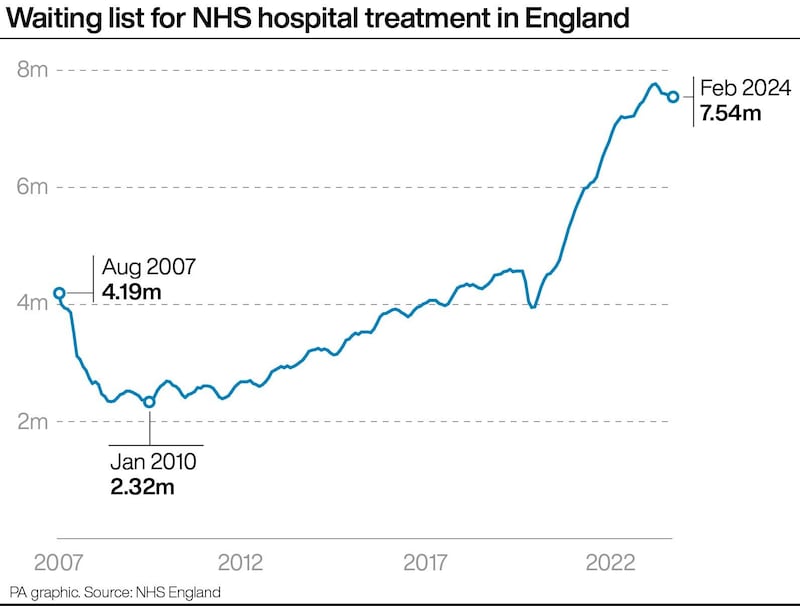
– Long waits for treatment
There were 9,969 people waiting more than 18 months to start routine hospital treatment at the end of February, down from 14,013 in January.
This figure had previously risen six months in a row.
A change in the way the waiting list is calculated, removing some patients who are treated by community services, is likely to have had an impact on the data.
Around 36,000 treatments have been excluded from the overall figures for February, including some of the patients who have been waiting the longest.
The Government and NHS England set the ambition of eliminating all waits of more than 18 months by April 2023, excluding exceptionally complex cases or patients who choose to wait longer.
Some 305,050 people had been waiting more than 52 weeks to start routine hospital treatment at the end of February, down from 321,394 at the end of January.
The Government and NHS England have set the ambition of eliminating all waits of more than a year by March 2025.
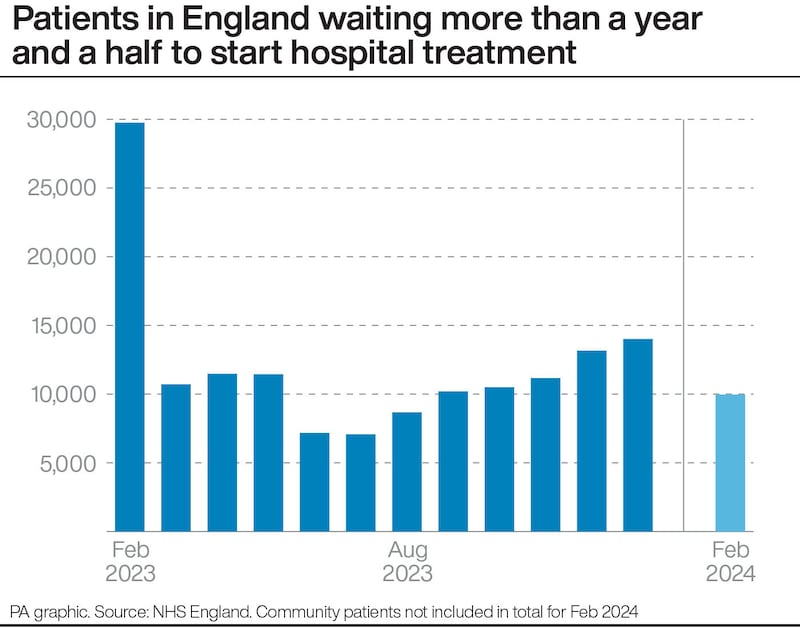
– Accident & emergency waits
Some 42,968 people had to wait more than 12 hours in A&E departments in March from a decision to admit to actually being admitted, down from 44,417 in February and 54,308 in January – which was the second highest figure on record.
The number waiting at least four hours from the decision to admit to admission has risen slightly, from 139,458 in February to 140,181 in March.
Meanwhile, 74.2% of patients were seen within four hours in A&Es last month, up from 70.9% in February and the highest figure since April 2023.
The NHS recovery plan set a target of March this year for 76% of patients attending A&E to be admitted, transferred or discharged within four hours.
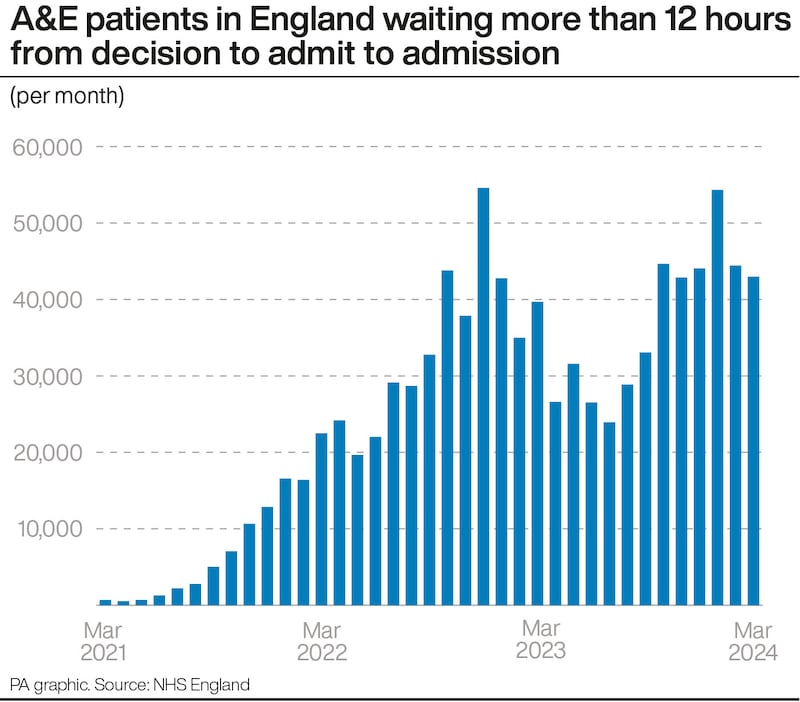
– Cancer referrals
A total of 78.1% of patients urgently referred for suspected cancer in February were diagnosed or had cancer ruled out within 28 days, up sharply from 70.9% the previous month.
It is the first time the target of 75% has been exceeded.
The proportion of patients in England waiting longer than 62 days in February from an urgent suspected cancer referral or consultant upgrade to their first definitive treatment for cancer was 63.9%, up from 62.3% in January.
The target is 85%.
GPs in England made 253,025 urgent cancer referrals in February, up from 249,787 in January and also up year-on-year from 229,769 in February 2023.
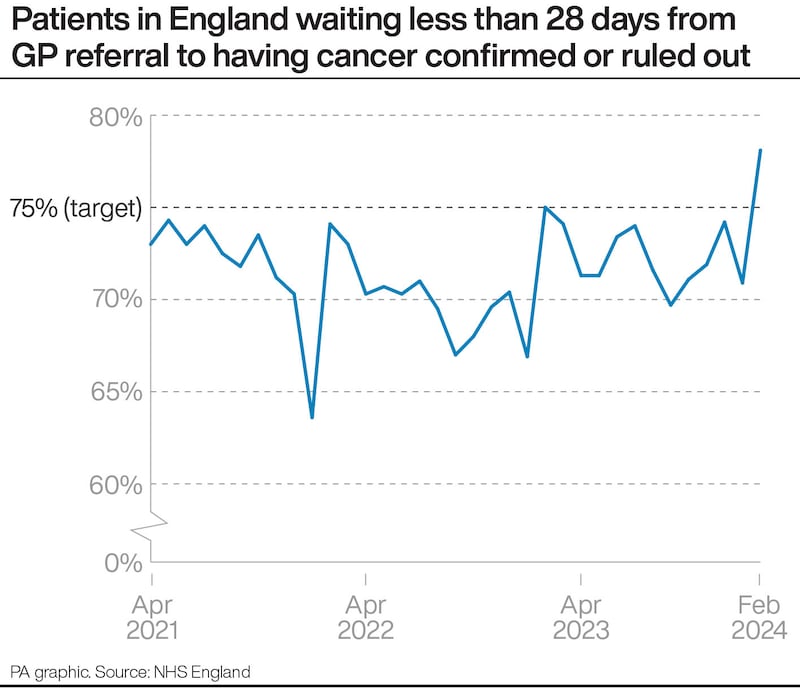
– Cancer diagnostic waiting list
The number of patients in England waiting longer than 62 days since an urgent GP referral for suspected cancer was 16,923 in the week ending March 3 2024, down from 21,753 in the week ending February 4.
The figure was nearly 34,000 at the end of September 2022.
Most of the patients included in this total do not have cancer and are waiting for a diagnostic test, while around one in six do have cancer and are waiting for treatment.
The Government and NHS England set the ambition of returning this figure to pre-pandemic levels by March 2023.
The average weekly figure for the pre-pandemic month of February 2020 (covering the four weeks to March 1) was 13,463.
– Ambulance response times
The average response time in March for ambulances in England dealing with the most urgent incidents, defined as calls from people with life-threatening illnesses or injuries, was eight minutes and 20 seconds.
This is down slightly from eight minutes and 25 seconds in February, but is above the target standard response time of seven minutes.
Ambulances took an average of 33 minutes and 50 seconds last month to respond to emergency calls such as heart attacks, strokes and sepsis.
This is down from 36 minutes and 20 seconds in February, while the target is 18 minutes.
Response times for urgent calls, such as late stages of labour, non-severe burns and diabetes, averaged two hours, three minutes and 47 seconds in March, down slightly from two hours, four minutes and 12 seconds in February.
– Delayed discharges
An average of 13,068 hospital beds per day last month were occupied by people ready to be discharged.
This is down from an average of 13,690 in February and 13,709 in January, though still higher than the average of 12,610 in December 2023.
On average, 46% of patients ready to leave hospital last month were actually discharged each day, up from 44% in February.
– Diagnostic tests
More than 330,000 people had been waiting longer than six weeks for a key diagnostic test in February.
Some 334,896 patients, 20.8% of the total, were waiting longer than six weeks for one of 15 standard tests, including an MRI scan, non-obstetric ultrasound or gastroscopy.
The figure is down sharply from 414,353 (26.2% of the total) in January, and lower than the equivalent figure for February 2023, which was 402,124 (25.1%).
The NHS elective recovery plan sets the ambition that 95% of patients needing a diagnostic test receive it within six weeks by March 2025.
